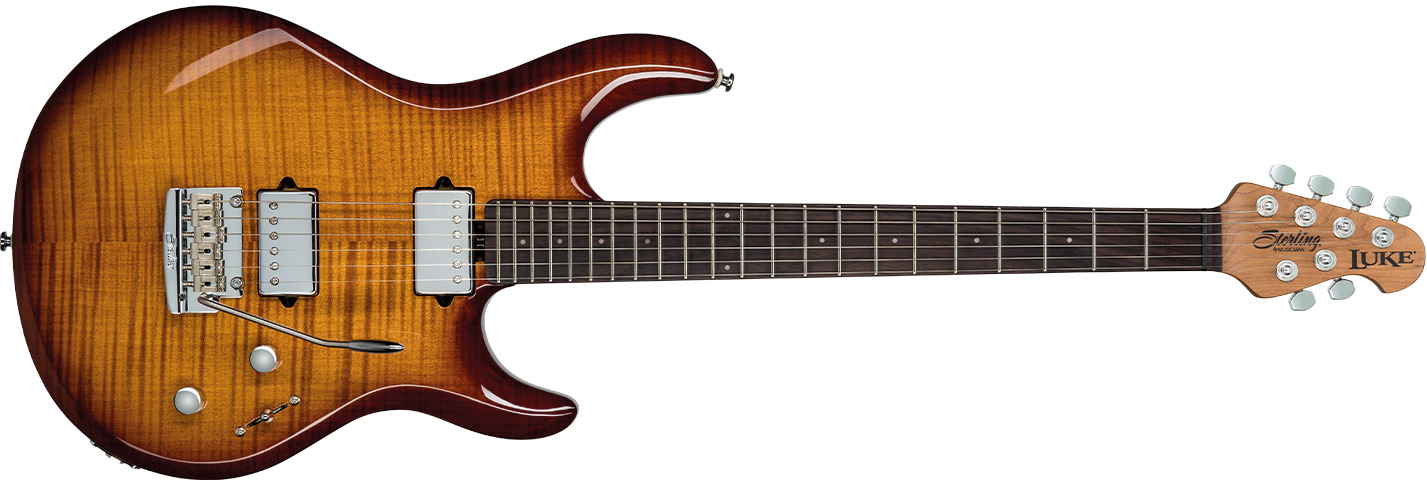The secrets behind Steve Lukather's guitar tone on Along For the Ride
A generous helping of gain is on the menu when recreating Lukather's tone on this choice cut from his latest album

The biggest challenge of writing about Steve Lukather for this column was choosing a song to examine. As a first-call session guitarist, he’s played on hundreds of hits over the last four and a half decades, and he’s recorded more than two dozen albums with Toto, about a dozen albums as a solo artist and god knows how many projects as a primary band member, including collaborations with Larry Carlton and Edgar Winter.
Considering Lukather’s massive amount of experience, it seemed like a better idea to look at his most recent work to learn how his tone has evolved. Until a few years ago, Luke used to rely on a sophisticated rack setup to access a wide variety of studio-quality tones, but more recently he’s adopted a much simpler approach, relying on his versatile Ernie Ball Music Man Luke signature guitars, classic Marshall-style Bogner Helios 100 half-stacks and an assortment of stomp boxes.
The “keep it simple” approach also applied to the recording of his latest solo album, I Found the Sun Again, which was recorded live in the studio without click tracks or multiple takes and with only minimal overdubs and post-processing.
Along for the Ride kicks off the album, highlighted by its catchy melodic riff and gorgeously gritty overdriven rhythm guitar tones. Luke generated the riff’s distinctive warble by striking the base of his Luke III’s vibrato bridge with his palm.
GUITAR: Ernie Ball Music Man Luke III Maple Top HSS (Bridge hum-bucker), Volume: 10, Tone: 10
AMP: Bogner Helios 100 (Hot input, Presence: 4, Bass: 5, Mid: 5.5, Treble: 5.5, Volume II: 3, Gain II: 9, Volume I: 3, EQ: In, 70/80: 80, CH1 Bright: Normal, Channel 1/2: 2, Pre EQ: Normal, Bot-tom: 3, Punch switch: On, JMP100/JTM30 switch: 100) with Bogner 4x12 with Celestion Vintage 30 speakers
EFFECTS: ToneConcepts Distillery The Luke (Contour: 0, Edge: 3, Guts: 6, Bleed: 10, Boost: 3) (solo only)
STRINGS/TUNING: Ernie Ball Paradigm .009-.042/Standard
PICK: Ernie Ball small teardrop (358 Shape) cellulose shell Heavy
His guitar’s tone during the solo at the end of the song is as good as it gets, with thick body, smooth sustain and percussive punch courtesy of boost from his signature ToneConcepts Distillery The Luke pedal and dynamic expression that oozes personality, which only comes from tens of thousands of hours working the fretboard.
According to Lukather, the latter is the key to truly great guitar tone, and gear is just the mechanism and foundation to present that.
“Once after I played a gig with Larry Carlton,” he illustrates, “this guy walked up to Larry and said, ‘That guitar you played sure sounded great tonight.’ Larry then pointed to the guitar on the stage and answered, ‘Oh yeah. And how does that guitar sound now?’” [Laughs]
All the latest guitar news, interviews, lessons, reviews, deals and more, direct to your inbox!
It’s a great lesson – the player matters more than the instrument, and one should obsess less about gear and more about developing one’s touch, expression, phrasing and nuance in the quest to achieve great tone.
Get the sound, cheap!

Sterling by Music Man Luke

Marshall DSL20CR

ToneConcepts Distillery The Luke
TONE TIP: Luke’s tone settings tend to give most frequencies equal weight, so avoid the temptation to boost just the mids or highs. Do, however, feel free to go heavy on the gain.
- I Found the Sun Again is out now via The Players Club.
Chris is the co-author of Eruption - Conversations with Eddie Van Halen. He is a 40-year music industry veteran who started at Boardwalk Entertainment (Joan Jett, Night Ranger) and Roland US before becoming a guitar journalist in 1991. He has interviewed more than 600 artists, written more than 1,400 product reviews and contributed to Jeff Beck’s Beck 01: Hot Rods and Rock & Roll and Eric Clapton’s Six String Stories.


